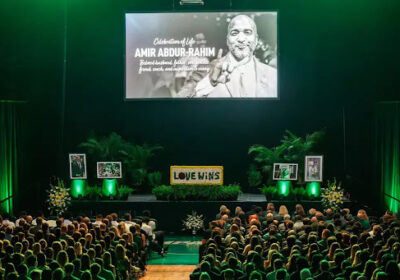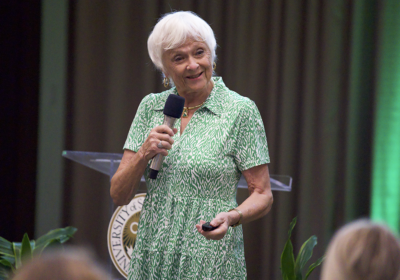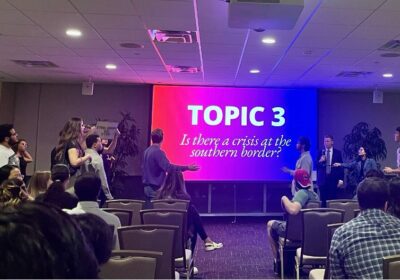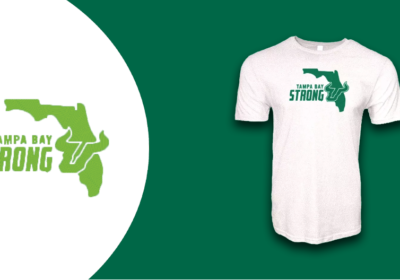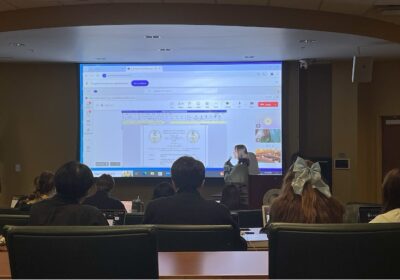Construction for displaced recreational facilities to be completed by next fall

The relocation plan for the various student recreational facilities that will be displaced by the construction of the planned on-campus football stadium will be completed by August 2024.
The stadium, which does not have an established construction date, will be built on what is currently the Sycamore Fields in the northeast corner of campus in between Sycamore Drive and USF Holly.
Due to the construction, a 1.2 mile fitness trail, an outdoor maintenance facility, a washdown station and the Sycamore and softball fields will be relocated to the USF Research Park. The area is a 112-acre-plot with a group of vacant research buildings at the intersection of Bruce B. Downs and N. 40th St.
An exact date for groundbreaking has not been set for the relocation, according to Carole Post, vice president for facilities and public safety operations.
The REC fields will have a three-month period of inaccessibility from June until the new fields’ opening in August next year, during which club sports are not in session. The schedule is being built to make sure there is “no gap in service,” Post said.
She said the university is “not anticipating any work on site that would disrupt the use of the fields” before June.
A maintenance facility will be built in the Shriners Annex and Lots 36A and 39A, closer to the new fields.
The displaced facilities are used by approximately 4,000 to 6,000 participants per week consisting of club sports, intramural and highschool athletes. Relocation was non-negotiable, according to Jay Souza, assistant vice president for student success.
Student impact was always at the forefront of the stadium construction, according to Post. Even when the stadium site location was decided, they were never going to “just eliminate” the fields, she said.
Although Post said construction was expected to begin over the summer, the date the “shovel hits the ground” has been deferred due to the “fluidity of construction,” according to Post.
“For projects like these, large construction projects, typically, construction dates can be a little bit fluid until they’re finalized. And that’s certainly the case here, certainly with the magnitude of the stadium,” she said.
Because construction is a multifaceted endeavor, the fields will still be accessible to students even after it begins, Post said.
The proposed REC fields at the USF Research Park will include:
- Four fully landscaped recreational fields
- Two softball fields
- Safety nets
- Field lighting
- Bleachers
- Scoreboards
- Outdoor storage area
- Bathroom building with storage and controls
- Parking lot with lighting and a drop off area
The fitness trail will have one grass parking lot near the Botanical Gardens and one grass parking lot near the Embassy Suites.
Altogether, the relocation efforts will total approximately $17.9 million, Souza said. The finances will be derived from carryover funds.
Here’s a breakdown of the costs:
- Rec fields and entrance $12.9 million
- North parking lot $171,000
- Fitness trail and gravel lot $1.1 million
- Maintenance facility and facility relocation $4.4 million
The temporary relocation for the fields will last seven to 10 years, after which a need for research facilities will result in further relocation, according to Post.
There’s no determined location for the fields once the land has to be reverted back for research purposes, she said.
Besides the fields, the decision for which elements remain or are removed will be made once the USF Foundation and Research Park determine how the land will be used 10 years from now.
The aim of the relocation project is to replicate the current facilities in a new area, according to Post.
“It is our objective, more or less, to have that be a one-to-one replacement. What you see there today is what you’ll see in the vacant land,” Post said.
The field will be used primarily for club sport and intramural participants who previously used to play on the Sycamore fields, Souza said. Organizations will also be able to use the facilities for special events, and they can be rented out for auxiliary income in the summer.


